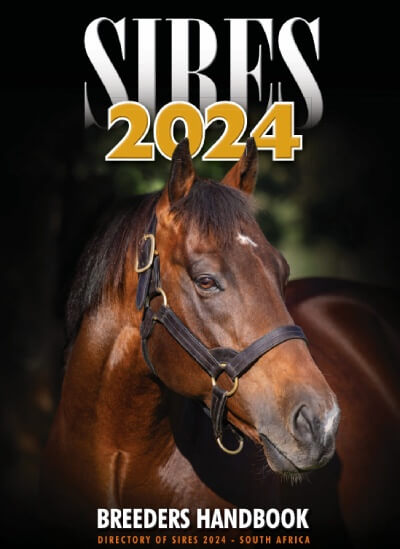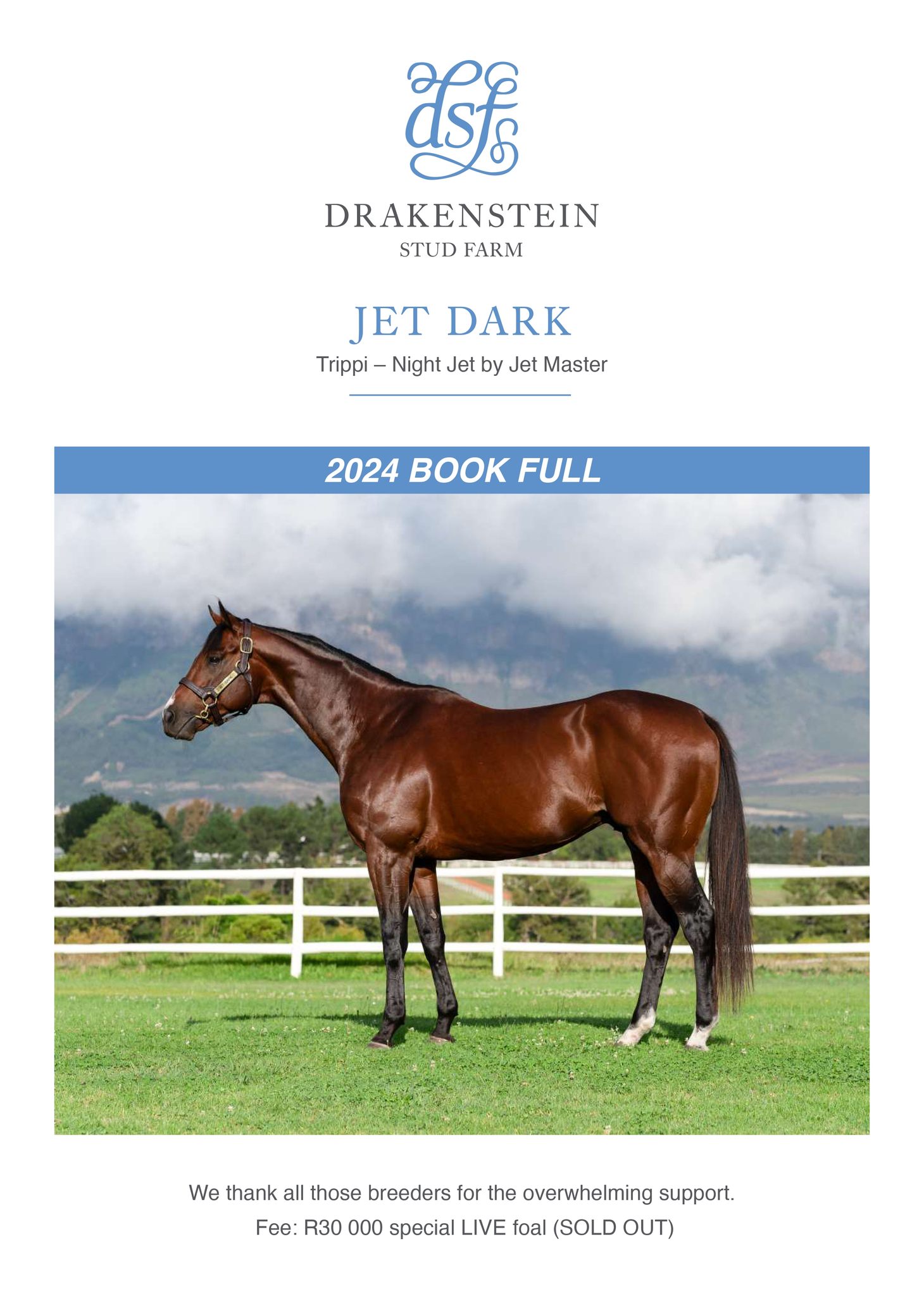Nineteen years ago, as I navigated the tumultuous waters of a mid-life crisis, marked by the personal upheaval of a divorce and the challenges of financial instability, I found solace in an unexpected realm: the intricate world of Thoroughbred pedigrees.
Chris Swart writes that it was during this period of introspection and online exploration that he crossed paths with Paolo do Carmo, a figure whose insights would pivotally shape my future.

Chris Swart – reflection on a crisis and the rewarding journey that followed
Paolo, a breeder of note, and disciple of The Rasmussen Factor had achieved remarkable success by crafting champions from seemingly modest beginnings—horses like Winter Romance, a lesser-known stallion whose progeny clinched thirteen victories.
My curiosity was piqued; I couldn’t fathom the mechanics behind such achievements.
Yet, through many nights of conversation, Paolo generously unveiled the layers of complexity within Thoroughbred pedigrees, focusing on the pivotal role of Lalun and the strategic interbreeding of notable half-brothers Bold Reason and Never Bend.
He elucidated how these bloodlines, through their presence in legends such as Sadler’s Wells, Mill Reef, Shirley Heights, and Riverman, contributed to the breeding of superior racehorses.
This enlightenment transformed my casual interest into a voracious thirst for knowledge. I delved deep into the study of pedigrees, seeking to unravel the mysteries of breeding excellence.
I was fascinated by the synergy of specific bloodlines and the potential to produce racing greatness from a careful blend of genetic attributes. This journey through the annals of Thoroughbred breeding has not only enriched my understanding but has also solidified my commitment to advancing this noble pursuit.

Today, as a pedigree analyst, my mission is to continue exploring, learning, and sharing the intricate dance of genetics and lineage that defines the Thoroughbred breed.
My initial foray into this world, borne out of personal crisis, has blossomed into a lifelong passion and professional calling (more friendly advice than monetary reward). It’s a testament to the transformative power of knowledge and the enduring allure of the racehorse, a creature of beauty, spirit, and unparalleled athleticism.
In the chapters that followed my initial foray into the intricate world of Thoroughbred pedigrees, my path intersected with Marsh Shirtliff, a prominent figure in horse racing who had under his care the exceptionally talented Gone West grandson, What a Winter. What a Winter, known for his remarkable agility and speed on the track, had transitioned to stud duties at Drakenstein, poised to imprint his winning legacy on future generations.
This encounter marked a significant milestone in my professional journey. Tasked with compiling ideal matings for What a Winter’s Broodmare band, I delved deeper into the art and science of pedigree analysis, leveraging my years of accumulated knowledge and research.
My objective was clear: to create a stallion profile for What a Winter that not only highlighted his distinguished lineage and racing prowess but also identified synergistic pairings with potential broodmares. This process was meticulous, blending genetic insights with the practical considerations of Thoroughbred breeding to enhance the probability of producing offspring capable of greatness on the racetrack.
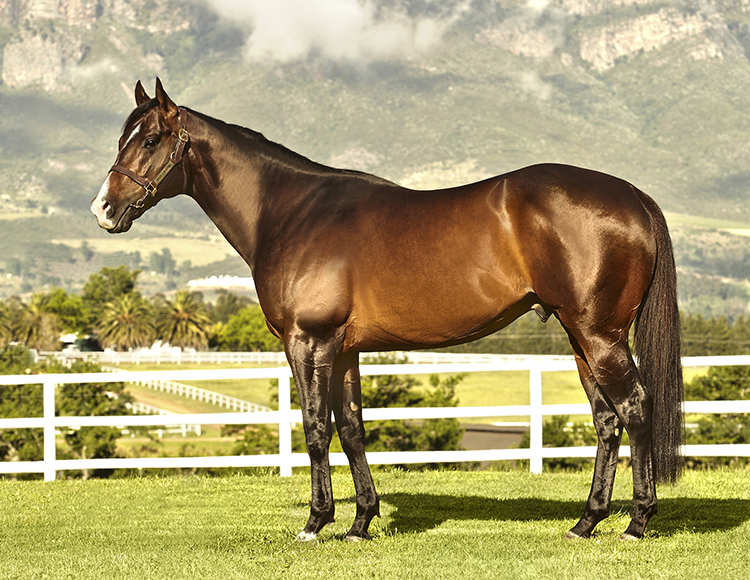
What A Winter
The challenge was invigorating. It required a nuanced understanding of pedigree dynamics, including the recognition of compatible bloodlines, the potential for reinforcing desirable traits, and the strategic avoidance of genetic pitfalls.
My work with What a Winter’s broodmare band was not merely a task; it was a testament to the journey I had embarked upon years earlier—a journey fueled by a quest for knowledge and a passion for the noble Thoroughbred.
Through this collaboration, I contributed to shaping the future of a lineage, applying theoretical principles to real-world breeding decisions. It underscored the profound impact of well-considered pedigree analysis in the quest to breed champions. This experience, among others, has not only enriched my expertise as a pedigree analyst but has also affirmed my belief in the transformative power of knowledge, dedication, and strategic insight in the venerable field of Thoroughbred breeding.
The journey through the realm of Thoroughbred pedigrees, enriched by collaborations and insights, took a significant turn when the late Matthew Lipman approached me for a detailed analysis of Trippi. This request led me to embark on an in-depth exploration of Trippi’s stallion profile, an endeavour that would illuminate my understanding of Thoroughbred breeding in profound ways. The task at hand was not just to assess Trippi’s pedigree but to unravel the layers of genetic strategy that contributed to his success as a sire.
During this period, I encountered the work of Karel Miedema, a renowned Thoroughbred analyst, whose examination of Trippi drew heavily on the insights of Les Brinsfield.
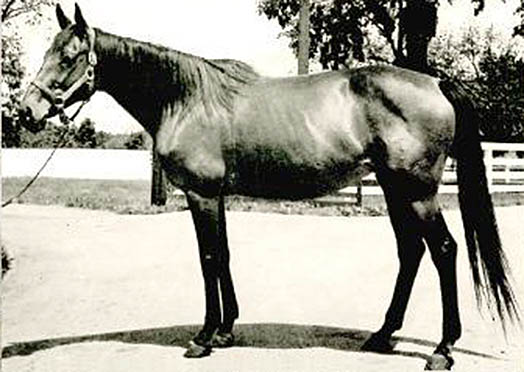
La Troienne
Miedema’s analysis spotlighted the enigmatic influence of La Troienne—a mare absent from Distorted Humor’s direct lineage, yet whose genetic legacy pervaded the pedigrees of his successful offspring. This perspective challenged and expanded my understanding of the subtle dynamics of pedigree influence, showcasing how distant genetic markers could wield a significant impact on a stallion’s breeding success.
The revelations from this stallion profile of Trippi, juxtaposed with the success of Distorted Humor—a stallion that, despite not clinching victories at the G1 level, had sired an impressive array of successful progeny—underscored a critical insight: the value of nuanced pedigree analysis. It became evident that the mastery of Thoroughbred breeding lay not only in recognising the direct lineage but in appreciating the broader genetic tapestry that influences a horse’s potential.
This phase of my journey, prompted by Lipman’s request and enriched by the intellectual legacy of Miedema and Brinsfield, was transformative. It solidified my commitment to the meticulous study of pedigrees, embracing the complexities and the often understated influences that shape the breeding of elite racehorses.
My engagement with Trippi’s profile was more than an academic exercise; it was a pivotal moment that honed my analytical skills and deepened my respect for the art and science of Thoroughbred breeding.
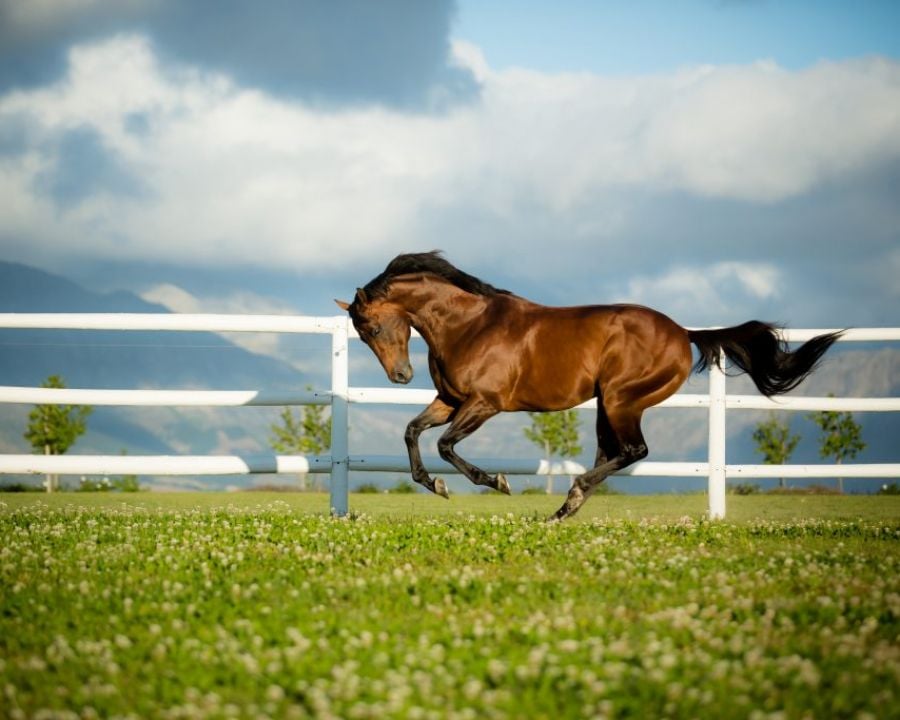
Trippi: End Sweep – Jealous Appeal (Valid Appeal)
(Pic – Drakenstein Stud)
As my exploration of Thoroughbred breeding deepened, a particular focus emerged on stallions that were “La Troienne free” yet boasted multiple lines of Orme, Ornament, and St. Simon.
This nuanced approach to pedigree analysis—highlighted by the successes of stallions such as Trippi and Distorted Humor—offered a fascinating lens through which to view Thoroughbred genetics. It was within this intricate study that I stumbled upon a recurring influence, one that resonated with the same magnitude as my earlier discoveries: the effect of Lalun.
The presence of Lalun in the pedigrees of leading racehorses and influential sires illuminated another layer of complexity in breeding strategies.
Lalun, whose contributions to Thoroughbred racing and breeding are well documented, became a beacon of genetic potential in my analysis. Her influence across generations, particularly in combinations where La Troienne was absent, reinforced the idea that exceptional breeding success often lies beyond the most celebrated bloodlines.
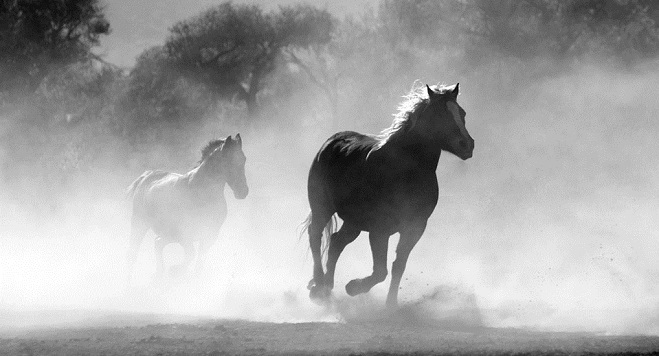
This revelation not only expanded my understanding of Thoroughbred pedigrees but also refined my approach to analysing and recommending mating strategies. It underscored the importance of considering a broader spectrum of genetic influences, including those that might not be immediately obvious.
The impact of Lalun, intertwined with the foundational lines of Orme, Ornament, and St. Simon, painted a more comprehensive picture of the genetic architecture that underpins breeding excellence.
Embracing this broader perspective, my work evolved to encompass a more sophisticated analysis of pedigree dynamics. This phase of discovery, prompted by a curiosity about the genetic makeup of “La Troienne free” stallions, ultimately enhanced my ability to decipher the complexities of Thoroughbred genetics. It reaffirmed my commitment to uncovering the subtle, yet profoundly influential, genetic markers that contribute to the breeding of superior racehorses.
Gone West, a stallion renowned for his profound impact on Thoroughbred racing and breeding, boasted a pedigree enriched with 8 lines of Orme and 51 lines of St. Simon. These lines are not just numbers in a pedigree chart; they represent a deep well of genetic potential that has significantly influenced the breed. Particularly noteworthy is the synergy between these lines and the essential components found in the pedigree of the iconic broodmare La Troienne, a combination that proved to be a recipe for success in producing remarkable offspring.
When the genetic legacy of Gone West intersected with mares carrying the lineage of La Troienne, among others, the result was a progeny list that reads like a who’s who of racing excellence:
– **Western Reel**, a product of Gone West and a mare by Irish River (Riverman – Lalun), bringing in Buckpasser, exemplifies the fusion of speed and stamina, underscoring the potency of combining these storied bloodlines.
– **Elusive Quality** and **Love Kiss**, direct descendants of La Troienne through Hero’s Honor, highlight the enduring influence of this matriarchal line, complemented by Gone West’s exceptional genetics.
– **Zafolia**, **Dance Parade**, **Green Starbow**, **The West**, and **Western Expression**, all with ties to Buckpasser, reinforce the importance of this sire in enhancing racing qualities through strategic breeding decisions.
– **Grand Slam** and **SPEIGHTSTOWN**, carrying Buckpasser’s legacy, illustrate the power of blending top stallion lines with mares possessing deep, quality pedigrees.
– The inclusion of **Riverman** and Lalun through horses like **Iftitah** and **West order** underscores the global impact of these lines, enhancing the breed’s diversity and vitality.
– **Foreign Courier’s** descendant, **Mythical Girl**, and **CAME HOME**, from Never Bend’s line, showcase the depth of influence exerted by key ancestors, even several generations removed.
– **CANADIAN FRONTIER** and **COWGIRL MALLY**, tracing back to Seattle Slew, and **LEICESTER Square**, blending the excellence of Sadler’s Wells with Shirley Heights, demonstrate the global tapestry of Thoroughbred genetics.
– **MARCHING WEST**, **PEARL Grey**, **ISTAN**, **SOUTHWESTERN Heat**, and **Tiz West**, among others, further exemplify the broad spectrum of traits—speed, stamina, and mental fortitude—bestowed by Gone West’s diverse lineage.
Gone West’s strategic pairings with mares from various influential lines—be it through direct descendants of La Troienne, the progeny of Buckpasser, or those carrying the legacies of Riverman, Lalun, and others—crafted a lineage of superior thoroughbreds.
This genetic alchemy, blending the enduring legacy of St. Simon and Orme with modern racing bloodlines, has not only produced standout racehorses but has also significantly contributed to the evolution and improvement of the Thoroughbred breed.
Through careful selection and an understanding of pedigree dynamics, Gone West’s offspring have become a testament to the power of strategic breeding. Their successes on the track and in the breeding shed continue to influence the breed, ensuring that the legacy of Gone West, enriched by the foundational genetics of Thoroughbred racing’s most iconic ancestors, endures for generations to come.
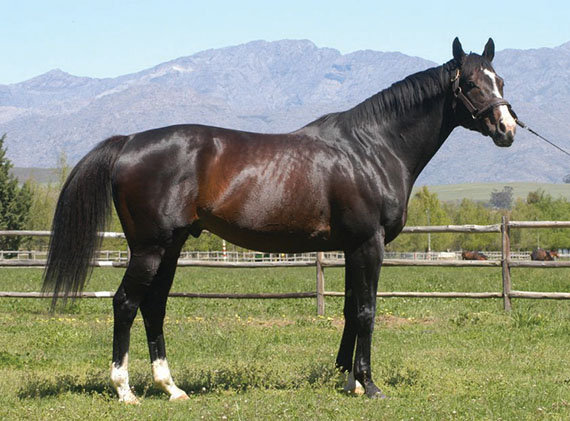
Western Winter
South African Thoroughbred racing and breeding boosted by the importation of Western Winter by Mike Rattray stands as a testament to visionary yet timing-sensitive decisions in the world of horse breeding. Imported arguably a decade too soon for the optimal integration with mares carrying the lineage of Lalun, Western Winter nonetheless carved an indelible mark on the South African Thoroughbred landscape.
“La Troienne free,” like his predecessor Gone West, Western Winter was a genetic goldmine with an additional 7 lines of Orme, 2 lines of Ornament, and an impressive 50 lines of St. Simon, embodying a lineage that seemed to whisper the legacy of La Troienne at every turn.
Despite the initial misalignment in timing with the ideal mares, Western Winter’s potential was undeniable.
When paired with a mare carrying Lalun in a pedigree, he ignited the track with Winter Solstice, born of a mare descending from Melun (Riverman), who not only showcased the latent potential within Western Winter’s genetic makeup but also became a living legend in his own right. Winter Solstice’s racing career was nothing short of spectacular, clinching 12 victories, including the prestigious Queen’s Plate, not once but twice, cementing his place in racing folklore to the extent that a rocking horse was crafted in his honour—a symbol of his enduring legacy and appeal.
Western Winter’s journey in South African Thoroughbred breeding underscores the intricate dance between genetics, timing, and strategic mating decisions.
His story is a vivid illustration of how a stallion, even when introduced ahead of the optimum breeding environment, can still exert a transformative influence on a breed. The legacy of Western Winter, particularly when aligned with the genetics of Lalun, highlights the importance of deep pedigree analysis and strategic breeding choices in realising the potential of Thoroughbred bloodlines. It is a narrative that enriches our understanding of Thoroughbred breeding and celebrates the lasting impact of carefully considered genetic alliances.
Reflecting on Western Winter’s influence and the nuances of his breeding success in South Africa offers invaluable lessons in the complexities of Thoroughbred genetics. It reaffirms the pivotal role of strategic breeding in harnessing the potential of bloodlines to produce champions that captivate, inspire, and leave a lasting legacy on the sport of horse racing.
What a Winter’s emergence on the South African racing scene was nothing short of meteoric.
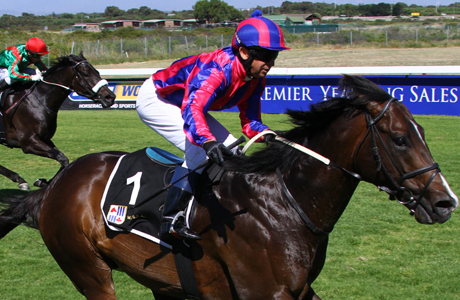
What A Winter and Karl Neisius (Pic – Supplied)
Guided by the adept hands of Karl Neisius and honed by the training mastery of Mike Bass, he displayed an extraordinary prowess in sprints, often leaving competitors trailing with seemingly effortless grace. His racing intelligence and physical capabilities were so pronounced that he won 15 starts, including prestigious races like the Computaform Sprint and The Mercury, while still under the bridle—a testament to his superior racing acumen and tactical speed. Dressed in the colours of Guy Shirtliff, What a Winter captivated the heart of this racing enthusiast.
Delving into What a Winter’s Pedigree unveils a lineage steeped in Thoroughbred aristocracy. His dam, Waseela, like Western Winter and Gone West, was “La Troienne free” but boasted an intricate web of genetic excellence with 9 lines of Orme, 1 line of Ornament, and 51 lines of St. Simon. This rich genetic tapestry underscored the potential for What a Winter to transcend his racing achievements and become a seminal figure in Thoroughbred breeding at Drankenstein Stud.
The anticipation surrounding What a Winter’s first crop of offspring was palpable, especially for those immersed in the nuances of Thoroughbred genetics. Les Brinsfield, renowned for his deep understanding and analysis of pedigree dynamics, would have been particularly keen to see how What a Winter’s genetic heritage would blend with selected mares, especially considering the potential amplification of certain traits given the absence of La Troienne in his lineage and the prominence of Orme and St. Simon. This anticipation was not merely about the continuation of a bloodline but about the potential for creating a new dynasty in Thoroughbred racing and breeding—a legacy built on speed, agility, and the inherent grace that What a Winter so effortlessly displayed.
What A Winter’s transition from the racetrack to the breeding shed represented a moment of both culmination and inception: the culmination of a racing career marked by dazzling victories and the inception of a breeding legacy poised to influence generations. As breeders and enthusiasts awaited the arrival of his progeny, there was a collective sense that What a Winter would imbue his offspring with the same indomitable spirit and racing prowess that defined his career.
Winning the L’Ormarins Writers Award was a milestone that not only honoured my contributions as an amateur through the written word but also opened doors to new realms and remarkable individuals within this vibrant community. It was during the celebrated trip to Goodwood, a name synonymous with racing heritage and excellence, that I had the fortuitous opportunity to meet Kevin Sommerville, the head of Gaynor Rupert’s Drakenstein operation.
From the moment of our introduction, it was clear that Kevin was not just an administrator of one of the most esteemed breeding operations in South Africa but a connoisseur of pedigrees, a student of conformation, and a practitioner of breeding excellence. His depth of knowledge and nuanced understanding of Thoroughbred pedigrees resonated with my passion for the art and science of breeding. The conversation flowed effortlessly, spanning the intricacies of lineage analysis, the subtleties of conformation assessment, and the strategies that underpin successful breeding decisions.

Drakenstein’s Kevin Sommerville (Pic – Candiese Lenferna)
Kevin’s insights into the operational ethos of Drakenstein and its commitment to breeding excellence were enlightening.
The conversation underscored the critical role of informed, meticulous breeding choices in shaping the future of Thoroughbred racing—not just in South Africa but globally. It was a meeting of minds, a confluence of shared passions, and a reaffirmation of the timeless pursuit of excellence that defines the essence of Thoroughbred breeding.
This encounter with Kevin Sommerville at Goodwood, against the backdrop of my recognition as a L’Ormarins writer, marked a defining moment in my journey.
It was a vivid reminder of the global community that Thoroughbred racing and breeding foster—a community bound by a relentless pursuit of excellence, a deep respect for the heritage of the sport, and a shared commitment to its future.
My respect for Kevin, both as an individual and for his role in advancing the objectives of the Drakenstein operation, was instant and profound. It was a meeting that not only enriched my understanding but also expanded my horizons, reaffirming my dedication to exploring and contributing to the world of Thoroughbred pedigrees.
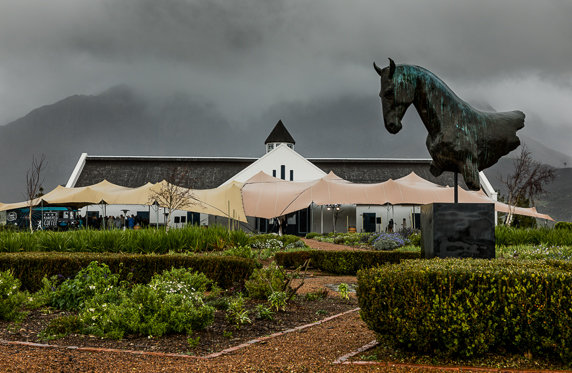
Drakenstein Stud Farm (photo: hamishNIVENPhotography)
The genetic labyrinth of What a Winter, guided by a hypothesis that his most successful progeny would exhibit the strength inherent in La Troienne’s lineage, was both a challenge and an adventure. Through meticulous analysis, patterns began to emerge, suggesting that the key to unlocking What a Winter’s breeding potential lay in harnessing the power of La Troienne through strategic matings. This theory was put to the test with the arrival of each new runner, marking milestones in a breeding saga defined by both science and art.
**Magical Wonderland** was the first harbinger of this breeding strategy’s success. Packed with La Troienne’s influence through Buckpasser, present in Al Mufti, and reinforced through Northern Guest, she was a living testament to the pedigree theory in action. Her prowess on the track underscored the potential of combining What a Winter’s genetic makeup with mares that carried La Troienne’s legacy, a blueprint for breeding excellence.
**Nanna Anna** and **Magic Money** followed, each bearing markers of La Troienne’s strength—Aspidistra for Nanna Anna and Bushfield and Seattle Slew for Magic Money. Their success added further credibility to the hypothesis, weaving a narrative of genetic potency that spanned generations.
**What A Player** introduced a new dimension to the unfolding story, with Shirley Heights, Never Bend, and Pardal contributing to a potent mix that included the first Lalun double through Foreign Courier. This combination highlighted the dynamic interplay of genetics that could yield exceptional racehorses.
**Winter Blues** and **Ambra**, with their ties to Buckpasser and, in Winter Blues’s case, Mill Reef and Lalun, continued the trend, showcasing the diversity of La Troienne’s impact when combined with the rich tapestry of What a Winter’s pedigree.
The climax of this genetic odyssey was reached with **Clouds Unfold**, a Group 1 winner whose lineage featured the famous cross of Sadler’s Wells and Mill Reef. Her triumph was a personal validation of rigorous pedigree analysis that had predicted the emergence of such a champion.
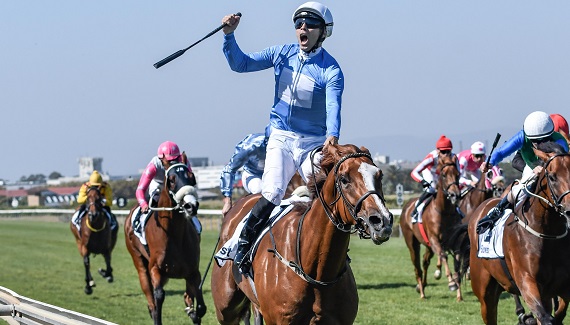
Clouds Unfold (Pic – Chase Liebenberg)
Clouds Unfold embodied the culmination of strategic breeding choices, heralding a new era of possibilities for What a Winter’s progeny.
This journey through the pedigrees of What a Winter’s offspring, illuminated by the guiding light of La Troienne’s genetic influence, reaffirmed the importance of deep pedigree knowledge and strategic breeding. The successes of Magical Wonderland, Clouds Unfold, and others in between are not merely victories on the track but milestones in the perpetual quest to understand and harness the complex web of Thoroughbred genetics. It is a testament to the art of breeding, where the past informs the future, and every mating choice can contribute to the legacy of champions.
As Clouds Unfold dazzled on the racetrack, setting the turf alight with her formidable performances, the curiosity about the genesis of her talent became a topic of discussion between Kevin and me. It was during one of these conversations that Kevin unveiled a strategic layer of thinking that had influenced the breeding decisions leading to Clouds Unfold. He explained that the decision to breed Clouds Unfold was inspired by the reverse of the renowned Montjeu cross with Gone West, a pairing celebrated for producing exceptional racehorses.
This deliberate choice to reverse-engineer the cross, which had yielded significant success in other lineages, was a testament to the innovative and forward-thinking approach that characterises Kevin’s handling of the Drakenstein operation. The Montjeu and Gone West cross, known for blending stamina with speed, had been reimagined to capitalise on the genetic strengths present in Clouds Unfold’s lineage, thereby maximising her racing potential.
Kevin’s insight into this strategic breeding decision shed light on the intricate web of considerations that breeders navigate to produce champions. It wasn’t merely about the pedigrees or the individual successes of ancestors but understanding how specific genetic combinations could enhance or complement the qualities sought in the next generation of racehorses. This approach underscored the artistry and science at play in Thoroughbred breeding—a dance of genetics, performance potential, and visionary strategy.
Clouds Unfold’s ascent to the pinnacle of racing excellence, underpinned by a thoughtfully reversed pedigree cross, illustrated the profound impact of such breeding decisions. Her achievements on the track were not just a testament to her innate talent but also a reflection of the meticulous planning and deep understanding of Thoroughbred genetics that guided her creation.
The conversation with Kevin not only deepened my appreciation for the complexities of breeding strategy but also reinforced the belief that the quest for breeding excellence is perpetual, requiring innovation, insight, and, sometimes, the courage to invert traditional formulas in pursuit of greatness.
Clouds Unfold’s legacy, marked by the reverse Montjeu and Gone West cross, stands as a beacon for breeders aspiring to harness the vast potential within Thoroughbred pedigrees, proving that visionary decisions, grounded in expertise and daring, can lead to extraordinary outcomes on the racetrack.
The progeny of What a Winter, following in their sire’s formidable footsteps, have made significant marks each carrying forward a unique blend of genetic excellence. The infusion of lineage from eminent La Troienne strong lines like Buckpasser, showcasing through runners like Fabian, Russet Air, and Winter Storm, underlines the enduring impact of meticulously considered breeding strategies.
Notably, Russet Air, a second Group 1 winner in this lineage, brought forward Buckpasser’s legacy through Northern Guest, exemplifying the profound influence of strategic lineage combinations. Spring Fling, tracing back to Lalun through Foreign Courier, and Tasunke, with a double dose of Danehill and thus double Buckpasser, further illustrate the diverse genetic heritage contributing to the excellence of What a Winter’s progeny.
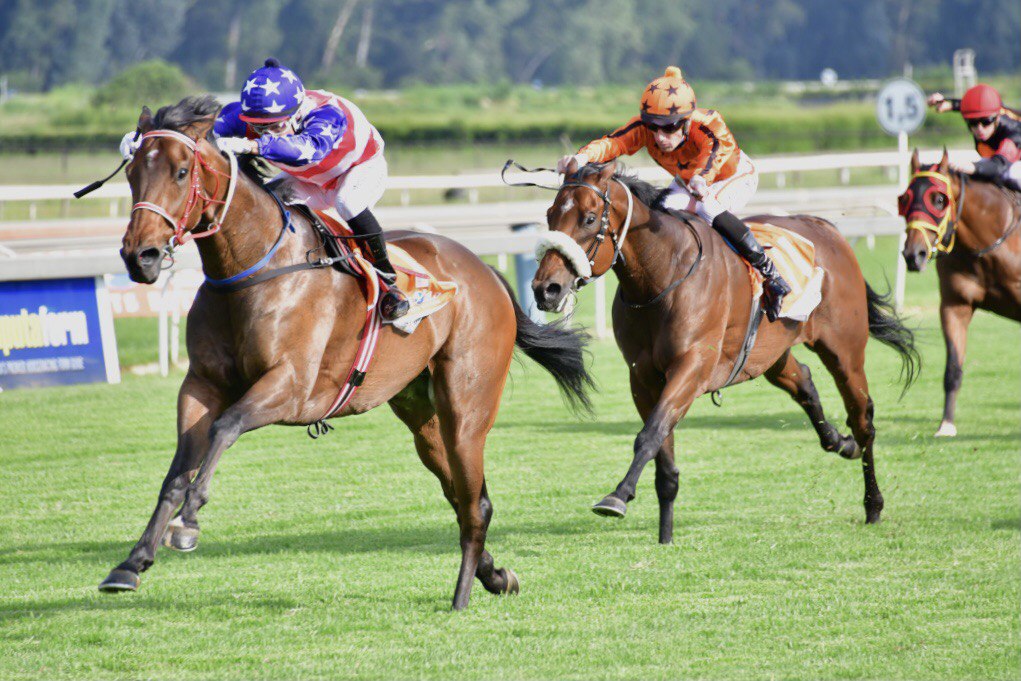
Expressfromtheus (Pic – JC Photos)
The narrative of success continues with EXPRESSFROMTHEUS, tied to Argosy and the half-brother lineage of Seattle Slew, and Fly Away, which blends the genetic prowess of Cohoes through Jet Master with Buckpasser through Northern Guest. MAIDENS Prayer and Mr Cobbs, with their connections to Sadler’s Wells and Lalun through Bold Reason, as well as significant ties to La Troienne packed lines like AP Indy, enrich the story of What a Winter’s impact on the breeding landscape.
The story of What a Winter’s progeny is not merely a list of names but a mosaic of genetic excellence, each contributing to the tapestry of South African racing.
From Group 1 victors like ISIVUNGUVUNGU, with a double infusion of Buckpasser, to promising talents like Cold Fact and Flame Flower, linked to Sadler’s Wells, the influence of What a Winter, coupled with strategic lineage choices, has propelled his offspring to significant achievements.
Each runner, whether gracing the winner’s circle or showing promise on the track, carries a piece of the genetic puzzle that is racing’s heritage.
The successes of What a Winter’s progeny, ranging from Clouds Unfold with the Sadler’s Wells and Mill Reef cross to Winter Cloud, a full sister to Clouds Unfold showcasing a Lalun double, are vibrant illustrations of the symbiotic relationship between pedigree analysis and racing success.
This detailed examination of Gone West and his lines, their progeny and their lineage connections not only celebrates the achievements of individual horses but also serves as a rich resource for understanding the complexities of thoroughbred genetics.
It reaffirms the importance of strategic breeding decisions, deep pedigree knowledge, and the pursuit of excellence that defines the world of breeding.
- In my next article, I will cover other Gone West lines and where to go with mares looking ahead.






